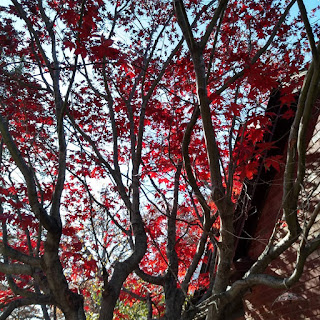Wednesday, November 18, 2020
Miss Charlotte Bronte meets Miss Barbara Pym: In the Autumn of our Years; Women of a Certain Age
American Doll and Toy Museum: Progress Update on my latest book and our Museum
Sunday, November 15, 2020
Skyward November 202 Dr. David Levy OSIRIS-REXx
From our guest blogger, Dr. David Levy. We have a variety of space toys and memorabilia in our museum, even a few meteorites and model rockets. We dedicate this post to the memory of our friend, teacher, and Mentor, Dr. Roald Tweet, d. Nov. 4, 2020.
Skyward for November 2020
David H. Levy
Hello, Bennu!
Not long
ago OSIRIS-REx, a spacecraft sponsored by the University of Arizona and flown
by NASA gently touched the surface of asteroid No. 101955, an asteroid named
Bennu, tried to grab some material, and then quickly took off again. It was the first try, but it was a huge
success! The craft gathered more than
twice what was expected—so much that some small pieces of material started to
leak out.
Of course, if all the sample
leaked out, then there was no sample.
But that won’t happen. NASA plans
to transfer the material to a safe storage container earlier than expected, and
then the sample will be safe.
The
mission, run jointly by NASA and the University of Arizona, cost the U.S. taxpayers about eight hundred
million dollars, plus about 185 million for the launch aboard an Atlas V
rocket. The Osiris-Rex is an acronym for
Origins, Spectral Interpretation, Resource Identification, Security, Regolith
Explorer. Asteroid Bennu is an
interesting choice. Bennu was the name for an Egyptian
mythological bird associated with creation, the Sun, and rebirth. But much as the name might inspire us to look
back at the early days of our solar system (which it does), that’s not the real
reason this particular asteroid was chosen.
Bennu is a C-type asteroid. It is also a sort of time capsule dating
back to the birth and early evolution of
the solar system. C is for carbonaceous asteroid, but it is a
B sub-type because it is primitive. The
reason for this is that it had undergone almost no geological change since it
formed.
Especially
if you pay taxes to the government of the United States, you may wonder why
more than 800 million dollars was sent to this distant spot of lightb in the
sky. I could begin to answer this by
saying that Bennu’s sample will teach us about what the solar system was made
of at its formation. From that, Bennu
could give us a healthy idea about what the Earth itself was like at its
birth. Sometime after it was formed, its
orbit changed so that now, every few dozen years it gets pretty close to
Earth. There is a very small chance that
it might hit Earth in the distant future.
Dolores Hill, a long-time member of the OSIRIS-Rex team adds: “NASA sent this mission to Bennu, a
primitive body, to return a pristine, protected sample so we
could better understand the beginning and history of the solar system,
formation of organic compounds important to life, and understand how Main-belt
asteroids migrate to the inner solar system to become Near-earth asteroids.”
All this is fine, but couldn’t that
money be better spent on Earth, to feed the starving, cure those afflicted with
coronavirus, house the homeless, and do all the other things we thought we
could drop when we decided to go to the Moon in the 1960s?
Yes, it could. Except for one thing. Going to the Moon seemed pointless until we
all were glued to television, watching breathlessly as one human stepped onto
the surface of another world. Dear
readers, we are explorers. It is in our
blood, our DNA, in our hopes and dreams.
And in the midst of this horrible pandemic, a small piece of human-built
machinery tapped the surface of a distant world and grabbed a sample. Indeed, space journeys like this one help
make life worth living. We live here. This is our neighborhood. We reach for the
stars.
images taken from the OSIRIS-REx spacecraft on December 2, 2018.



























































wCWk~%24(KGrHqV,!h8Ew5GsnS3dBMUy3MzVPg~~_3.jpg)










































































